High Potential Near Miss: Line of Fire During Mooring Operations
What happened?
A seafarer was caught in the line of fire and temporarily trapped by a mooring line, but fortunately escaped without serious injury.
During the mooring of an offshore support vessel at a sea mooring, the crew noticed that the hawser had become fouled. The chief officer, who was in charge of the watch, decided to manoeuvre the vessel around the buoy to ensure that the line would provide a clear lead once the hawser had been made fast. After securing the hawser to the mooring bitts, the chief officer started manoeuvring the vessel around the sea buoy in an anti-clockwise direction. He was not aware that a seafarer was still located on the foredeck area, coiling a grapple rope.
As the vessel was manoeuvring around the buoy, the swell and sea state affected the vessel’s rate of turn, causing it to move ahead rather than turn as planned. This subsequently resulted in the direction of the mooring buoy to lead aft of the vessel’s port beam and place the hawser line under tension; the taut line slipped over the bow fender and bulwarks arrangement and pinned the seafarer against the handrail of the stairs for approximately 4-5 seconds. The vessel moved in the seaway; the line tension subsided, and the seafarer was freed. He escaped serious injury but experienced some post-event shock and localised bruising and pain.
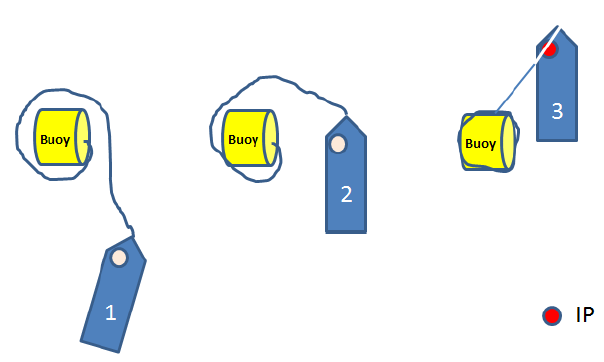
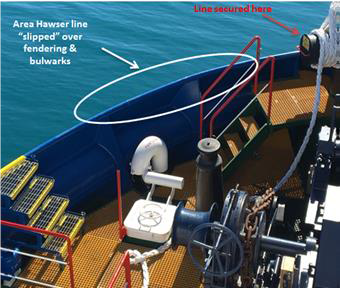
What went wrong? What were the causes
- The design of the sea buoy allowed the floating hawser and messenger to become fouled when floating free;
- The location of the sea mooring was subject to strong and fluctuating currents (a replacement low profile sea buoy was ready to be deployed upon the vessel’s next arrival in port);
- The chief officer believed the foredeck to be clear of personnel immediately before starting his manoeuvre around the sea buoy to clear the hawser;
The conning position at the forward console has inherent blind spots, caused by vertical window stanchions, which prevent an uninterrupted view of the foredeck area unless the person manoeuvring the vessel moves his field of view;
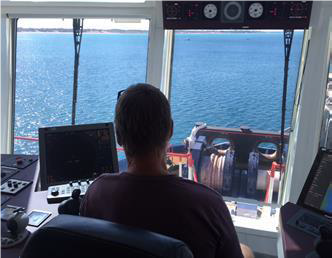
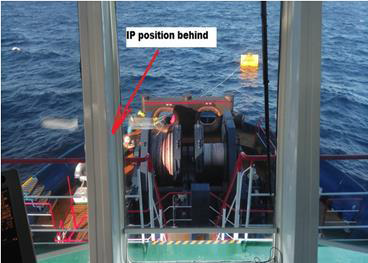
- Confirmation by very high frequency (VHF) radio that the deck was clear, was not obtained;
- The vessel manoeuvre used to un-wrap the hawser from the sea buoy had the potential to place sudden tension on the hawser line as the vessel rotated around the sea buoy. It also had the potential to place an adverse lead on the line from the vessel’s central panama lead.
What actions were taken? What lessons were learned?
- A new low profile sea buoy has been deployed that is more suitable to areas experiencing strong and fluctuating currents;
- A strict clear deck policy has been enforced for future operations involving vessel manoeuvres while attached to a mooring hawser, including VHF communications confirming that the deck is clear prior to commencing the manoeuvre;
- A toolbox talk (TBT)/job safety analysis (JSA) review will be held prior to manoeuvring the vessel around a sea buoy that emphasises the clear deck policy and VHF confirmation;
- An alternative method, used by other persons performing the manoeuvre in previous occasions, involved using the azimuth drives to ‘side walk’ around the buoy, while keeping the buoy facing the bow and not under tension. This method would be used henceforth.
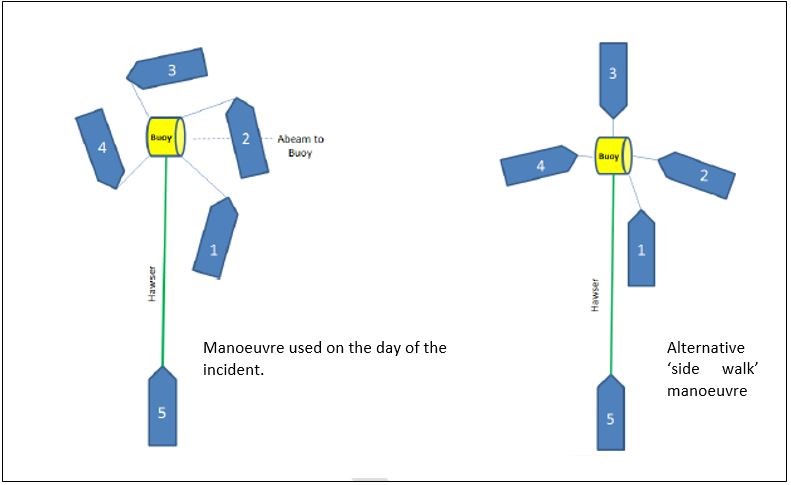
IMCA notes that mooring incidents have very high potential for serious injury. Just two incidents are highlighted here:
- Lost time injury (LTI): Hand injury during mooring operations
- Lost time injury (LTI) during mooring operations
Members may also wish to refer to:
- Mooring practice safety guidance for offshore vessels when alongside in ports and harbours (IMCA HSSE 029)
- Line of fire (video)
- In the line of fire (video)
Safety Event
Published: 25 September 2018
Download: IMCA SF 22/18
IMCA Safety Flashes
Submit a Report
IMCA Safety Flashes summarise key safety matters and incidents, allowing lessons to be more easily learnt for the benefit of all. The effectiveness of the IMCA Safety Flash system depends on Members sharing information and so avoiding repeat incidents. Please consider adding safetyreports@imca-int.com to your internal distribution list for safety alerts or manually submitting information on incidents you consider may be relevant. All information is anonymised or sanitised, as appropriate.
IMCA’s store terms and conditions (https://www.imca-int.com/legal-notices/terms/) apply to all downloads from IMCA’s website, including this document.
IMCA makes every effort to ensure the accuracy and reliability of the data contained in the documents it publishes, but IMCA shall not be liable for any guidance and/or recommendation and/or statement herein contained. The information contained in this document does not fulfil or replace any individual’s or Member's legal, regulatory or other duties or obligations in respect of their operations. Individuals and Members remain solely responsible for the safe, lawful and proper conduct of their operations.
